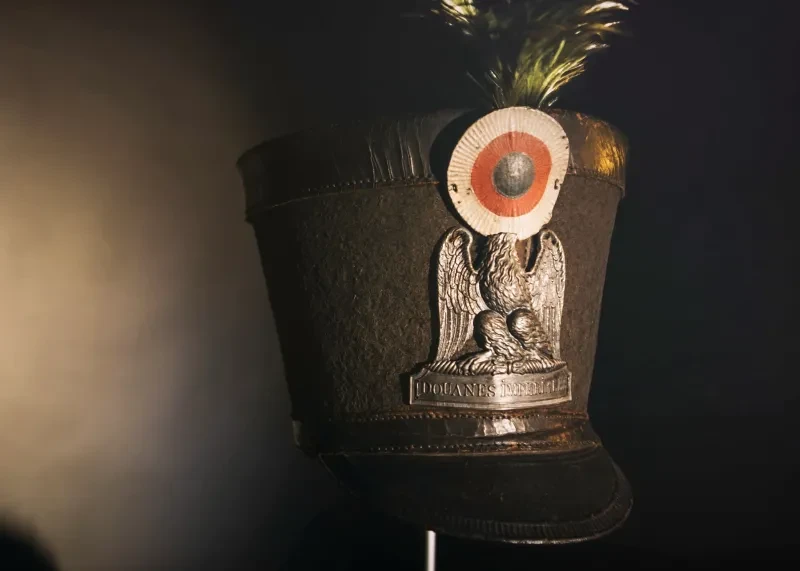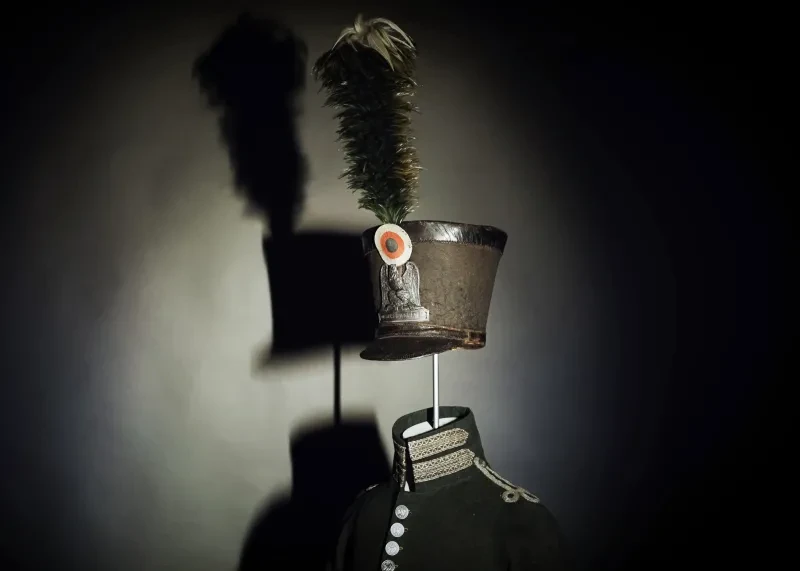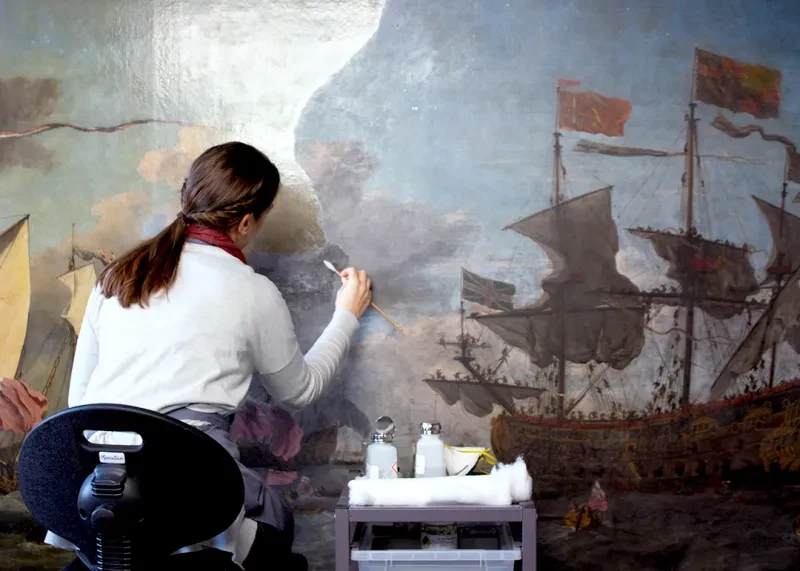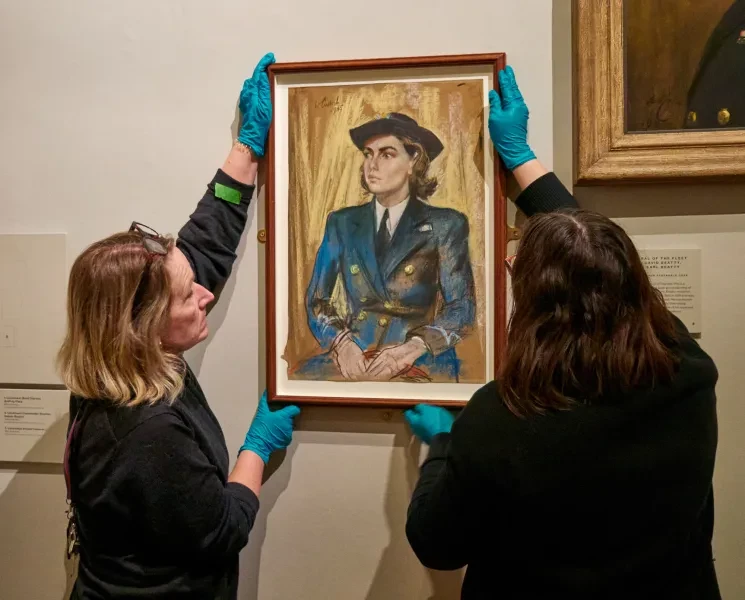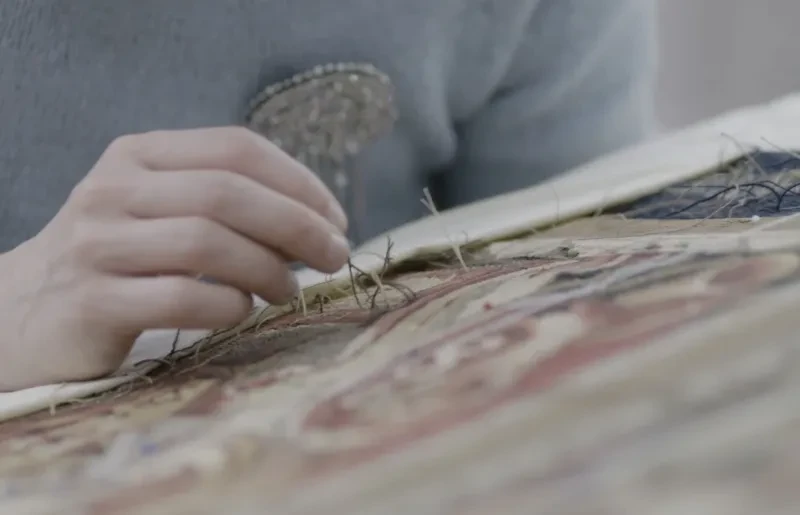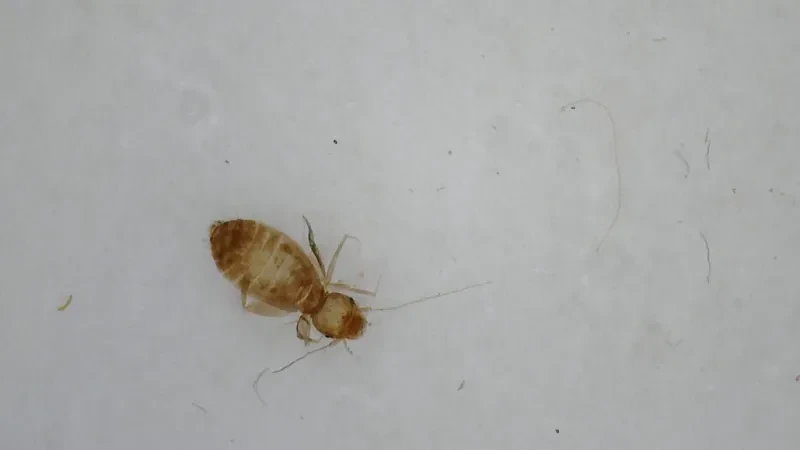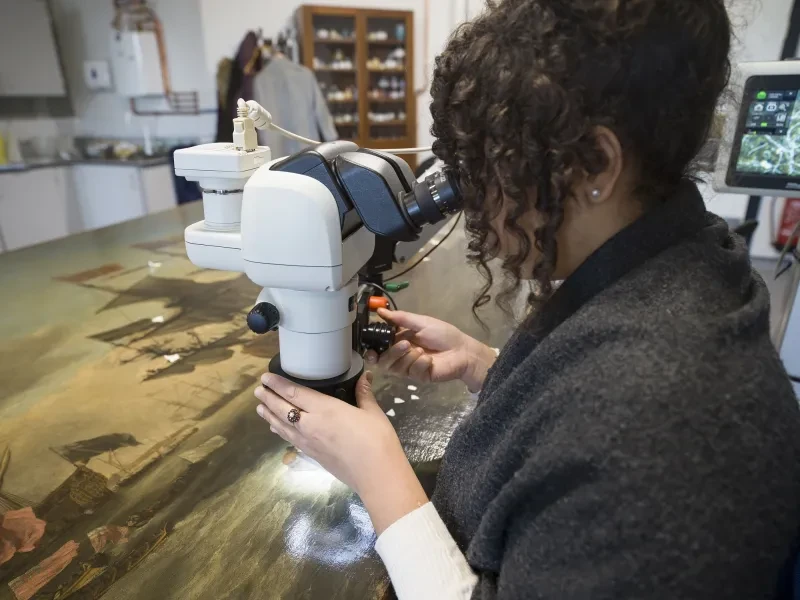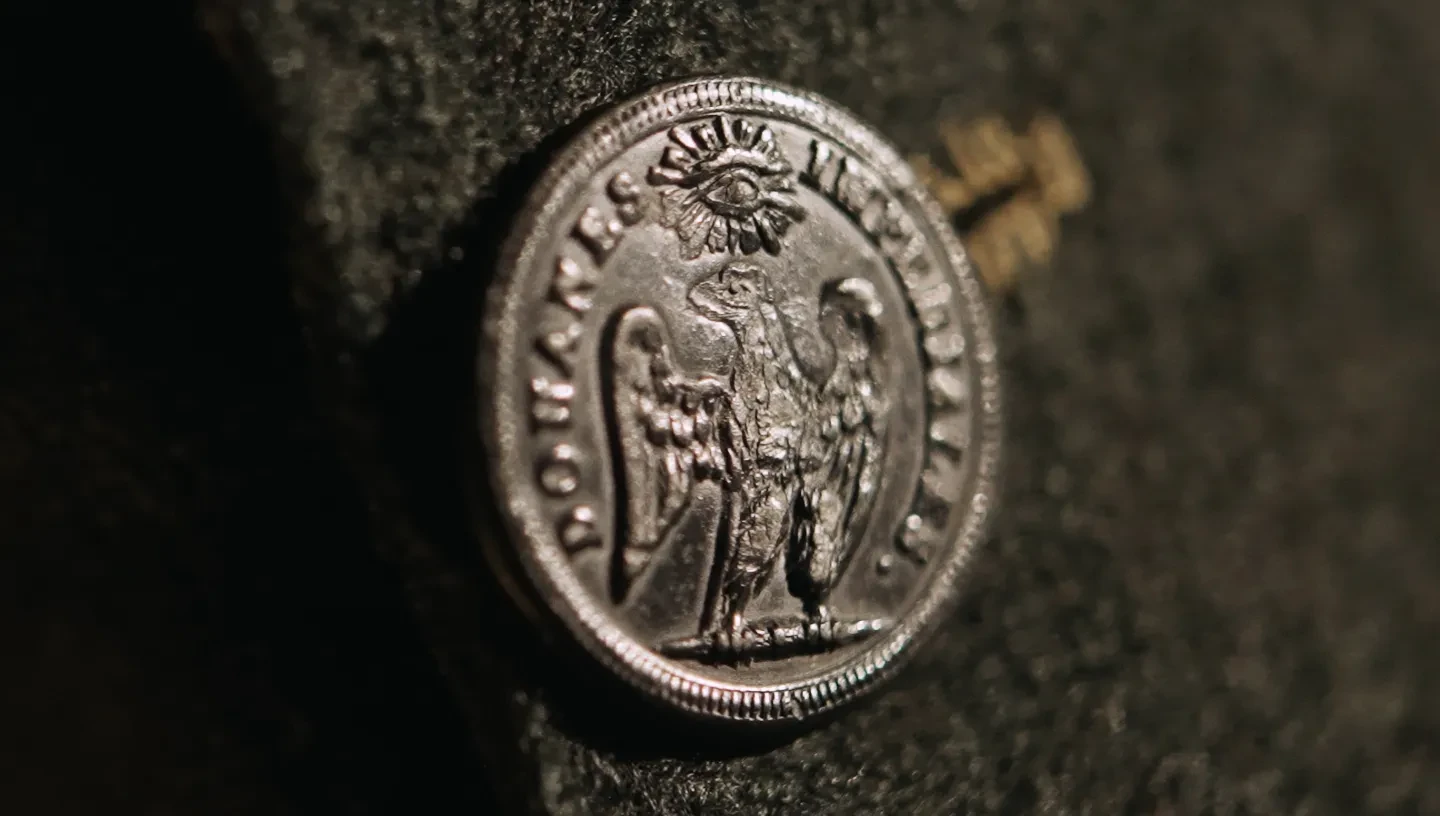
Conservation is a vital part of any museum, but the care and specialist skills involved are rarely seen by visitors.
“As conservators we always know that we’ve done our job well when the work is invisible to the person looking at the object behind glass,” says Aisling Macken, Textile Conservator at Royal Museums Greenwich.
However, this particular project may change that.
In 2022 Macken began work on a very special uniform that had been acquired by Royal Museums Greenwich.
It is the uniform of a French customs officer, dating from the Napoleonic period. The reason it had become part of the collections at Greenwich is that, in 1809, a 19-year-old Royal Navy midshipman called Charles Hare used the uniform as part of a daring escape from a French prison fortress.
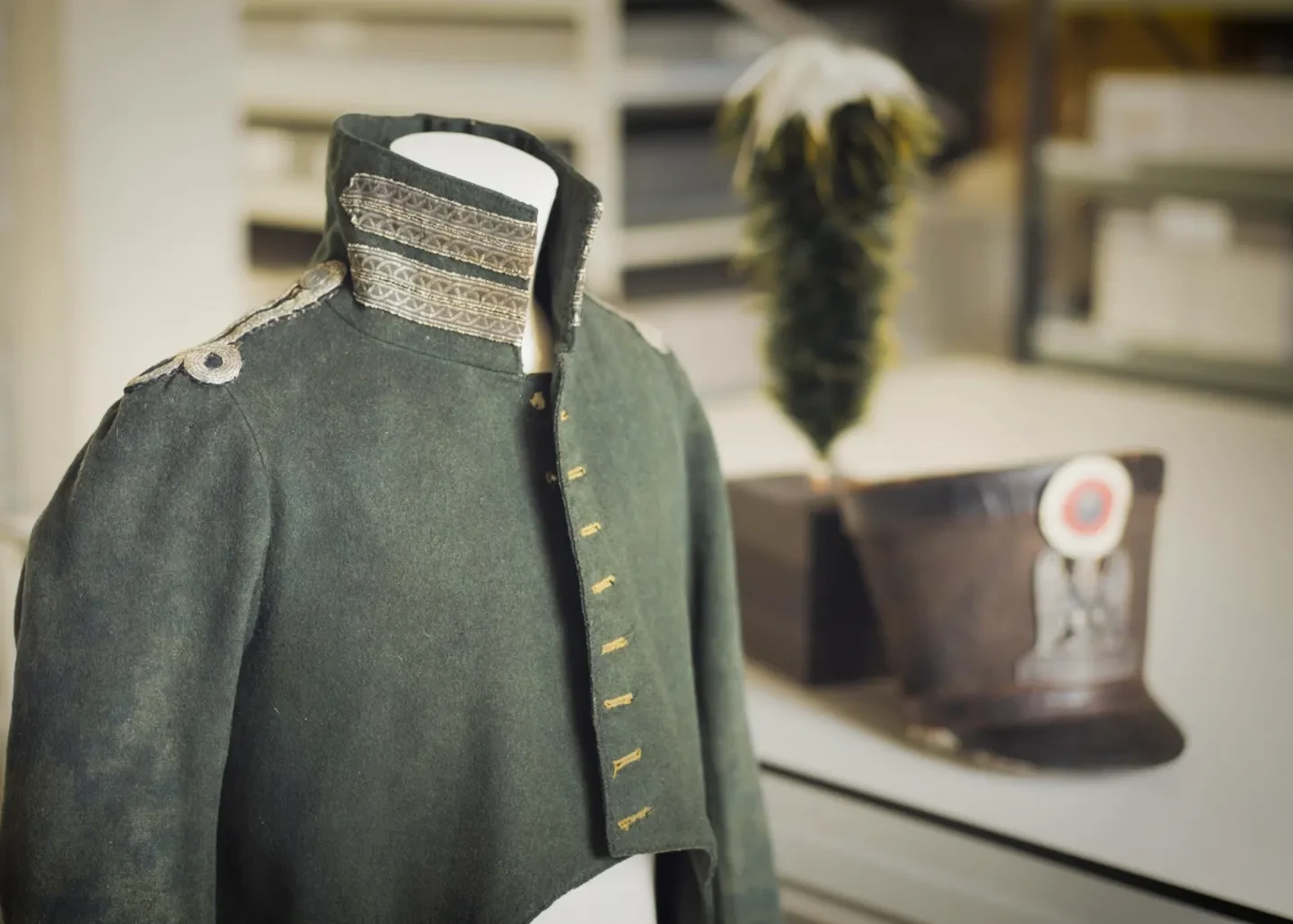
For more than 200 years the uniform has been treasured by Hare’s descendants in Canada. Now, a new chapter in its story is being written. Following careful conservation, the uniform is on public display in the Nelson, Navy, Nation gallery at the National Maritime Museum.
From cleaning and dyeing to stitching and mannequin making, discover what was involved in preparing this unique object for display.
Examining the uniform
“Starting any conservation process is always very exciting, because you know that you are on the road to seeing the object on display, which is the real pinnacle of the conservator’s work,” explains Macken.
The Charles Hare uniform consists of a green coat made of a felted wool fabric, with silver lace decoration and four embroidered eagles on the tails.
There is also a ‘shako’ – a tall, cylindrical hat – topped with a plume of chicken feathers, which have been dyed green. The final element of the uniform is a cross-belt plate, which would have held straps for carrying guns and bags.
An initial assessment revealed the uniform’s delicate condition. The woollen coat had numerous small holes caused by insects, and several of the embroidered eagles’ metal threads had become loose.
The buttons on the front of the coat had also been lost, which Macken explains posed both aesthetic and structural issues: “This was unfortunate for us in terms of the overall look of the uniform, but also in terms of stabilising the uniform on the mannequin in the gallery – ensuring it sits correctly without risking additional strain on the shoulders and the front.”
In the case of the shako, the surface was covered in a layer of dust and dirt. The leather headband inside had been degraded by sweat and body oils, causing it to crack and delaminate, and the plume of feathers had become limp.
“The uniform has survived for over 200 years before coming to us,” Macken says. “It’s a privilege to get to work on it to ensure its survival for future generations.”
Cleaning, conservation and care
One of the first steps in the conservation journey involved cleaning the coat and shako. Macken used a specialised museum vacuum cleaner to carefully remove the layers of dust and dirt. A leather conservation specialist was enlisted to reinforce the shako’s damaged headband with Japanese tissue paper.
Macken then set to work on the coat. She dyed samples of wool fabric to match the ‘finance green’ colour of the original uniform, which could be inserted behind the areas of insect damage for support.
“It was an exciting challenge to work with something so different to what we’re used to, which is blue. Navy blue,” says Macken. “At the National Maritime Museum, we don’t have any green uniforms!”
It also involved a lot of trial and error: “It is challenging at times to create colours using modern synthetic dyes to match an object that is over 200 years old. It takes a lot of knowledge of colour and colour theory to be able to look at something historic, look at what we have that’s modern, and make the two match.”
Once the dyeing process was complete, Macken sewed the patches in place. To do this, she used stab stitches – small running stitches – with polyester thread, stitching close to the edges of the damaged wool. “Stitching is a really nice task to sit quietly and focus on,” she says. “It’s so satisfying when you finish, the patch matches, and your stitching is neat.”
The final details
Using the surviving buttons on the shoulder decorations and cuffs as a guide, the team decided to create a set of replica buttons to help hold the uniform in place while on display.
“The buttons are very important for the aesthetic of the uniform, so when the viewer is seeing it in the gallery, they really see it as a French Imperial customs uniform,” Macken says.
For this specialist task, Macken enlisted the assistance of Firmin House. Since 1655 the company has been manufacturing buttons for uniforms, badges and ceremonial regalia, working with organisations including the Household Cavalry and the Honourable Artillery Company.
Firmin House created new silver-plated buttons, which feature the characteristic imperial eagle design of Napoleonic France.
The eagles on the coat’s tails also received attention. Macken used fine polyester thread to tack down the loose metal threads, securing the emblems in place.
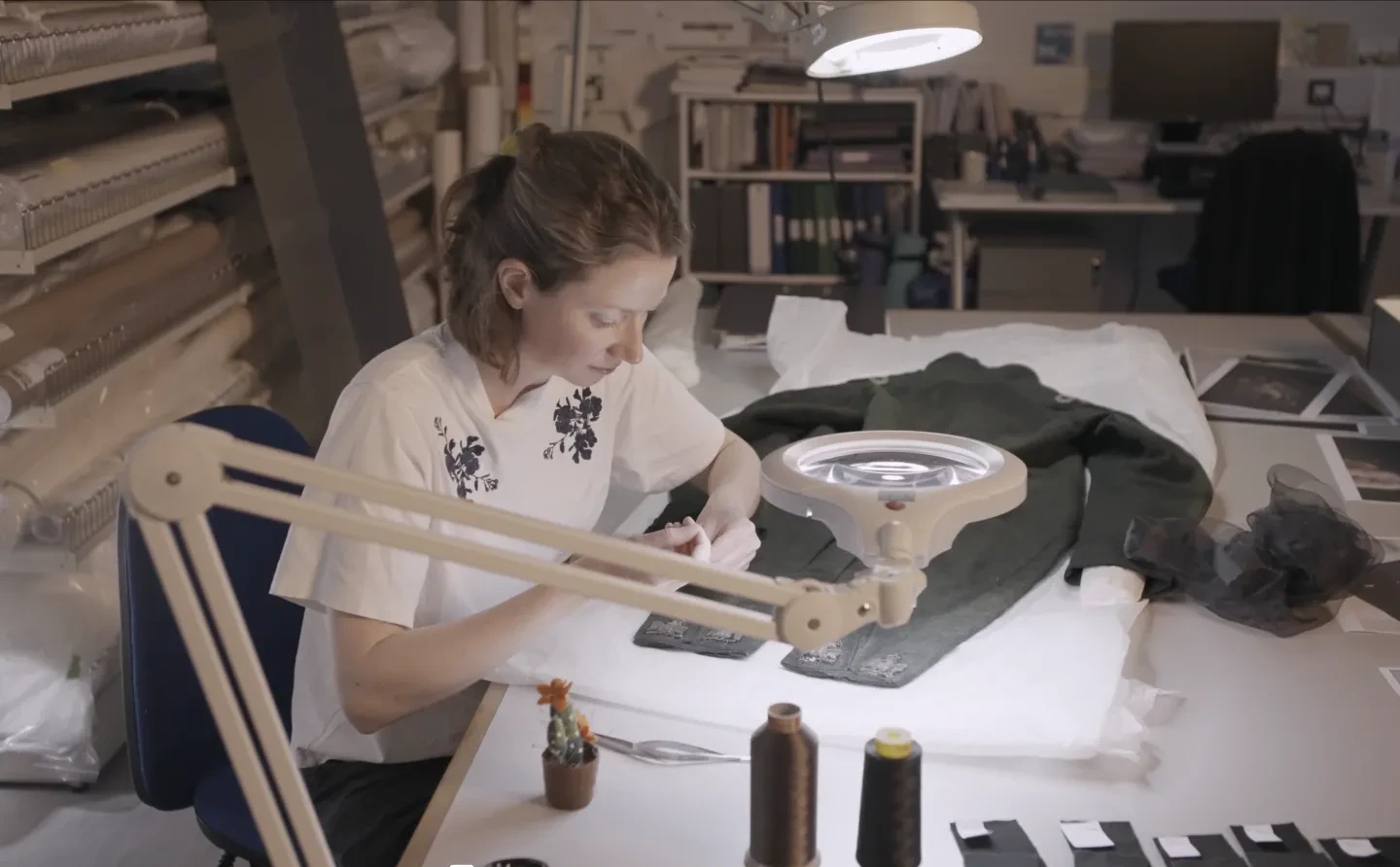
Preparing the uniform for display
To ensure the uniform could be safely displayed in the gallery, a bespoke mannequin was created by H&H Sculptors Ltd. Based in Canterbury, the organisation makes torsos and mounts to display costumes and historic uniforms.
Due to the high cut of the coat and its long tails, the team created a mannequin with a cut-away front, giving visitors a better view of the uniform. A separate hat mount was made to safely display and support the shako.
“The reason why the mannequin has to be bespoke is because we can ensure it’s made from conservation grade materials, which will preserve the life of the textile,” explains Managing Director and Head of Sculpture, Garry Hall. “We can also make sure it’s the right size to support the uniform.”
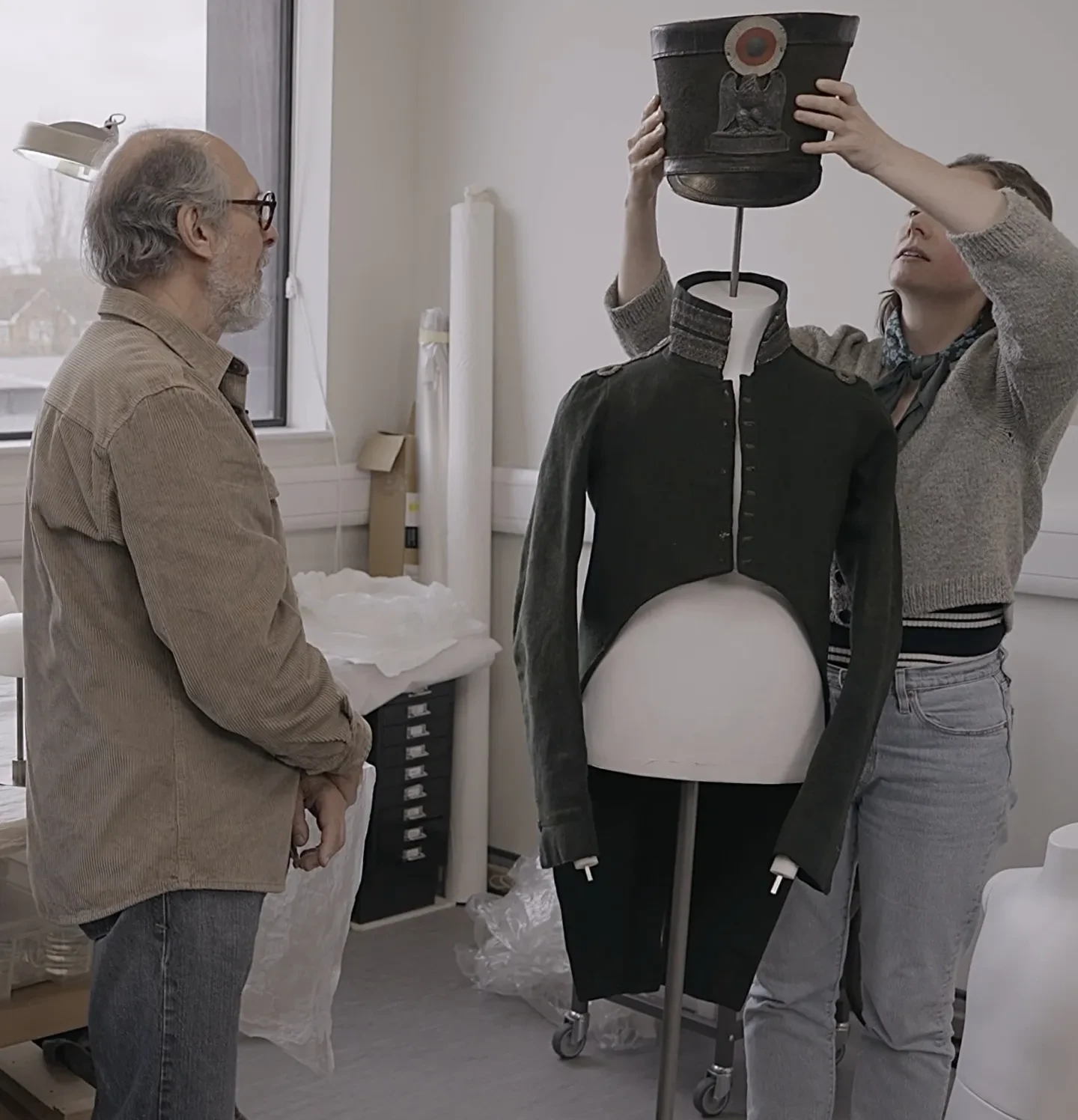
“I really feel a connection to Charles Hare from working with the uniform and getting it on the mannequin,” Macken adds. “When you take the measurements of the mannequin, you start to envision his size, his height, and how he would have looked in the uniform. It puts a human element into it.”
When visitors see the uniform on display at the National Maritime Museum, it's unlikely many will notice details like the mannequin; the story of the uniform itself takes centre stage. But for the team behind the scenes, it is this kind of care and dedication that makes museum conservation special.
“What I hope people will take away and appreciate is the immense number of hours and work that have gone into getting this uniform ready for display in the gallery,” Macken says. “We are so proud to share the work we have done.”
Find more stories you might like
This project was made possible by the generosity of the Anthony and Elizabeth Mellows Charitable Settlement, the Aurelius Trust, the Idlewild Trust, the Leslie Mary Carter Charitable Trust and the Radcliffe Trust.
